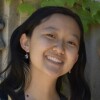US Relaxing Space Export Controls

A SpaceX Cargo Dragon vehicle prepares to dock at the ISS.
NASA
The Commerce and State departments issued multiple space-related export control rules this fall that NASA says will ease international cooperation and the transition from the International Space Station to commercial stations in low-Earth orbit.
The final and proposed rules expand the list of countries that can receive certain space defense components and lift controls on spacecraft with cooperative abilities such as docking. Other elements of the rules apply to NASA specifically, including license exemptions for spacecraft exported under Space Act Agreements or specified NASA programs. Broadly, the new rules draw new lines between spacecraft capabilities that constitute potential military applications and capabilities that are increasingly used in commercial spacecraft.
At a public meeting
This change provides some licensing relief for less sensitive items going to “more traditional partners,” Tu said. “Having as robust of an ability to facilitate exchanges in support of those programs is something that NASA is really interested in, finding a way to do so without jeopardizing any national security concerns at NASA,” Tu added.
NASA also helped identify additional items to be reclassified to further reduce their licensing requirements, said Jason Chauvin, a senior licensing officer in the Commerce Department. The reclassification of these items, which include certain thermistors, bandpass filters, Hall-effect sensors, and flight cable assemblies, allows them to be exported without licenses to countries other than China, Russia, or Venezuela.
The interim final rule further clarifies that the license exception for U.S. government agencies and those of cooperating governments applies to exports made under Space Act Agreements to which NASA is a party. These include over 600 agreements with foreign entities.
The State Department’s proposed rule adds an exemption that authorizes exports without a license for four official space agency programs: the Lunar Gateway, Mars Sample Return, Nancy Grace Roman Space Telescope, and Orion spacecraft. The exemption excludes launch vehicles, which have greater national security risks due to applications for launching missiles and weapons of mass destruction.
The proposed rule also includes license exemptions for crewed spacecraft and their parts used in space tourism or fundamental research if they maintain ownership in the U.S., are used on missions limited to suborbital trajectories, and have destinations approved by the Federal Aviation Administration or the destination’s foreign equivalent. These destinations cannot include any countries listed in Country Groups D:5 or E,
The State Department’s proposed rule also creates licensing exceptions for spacecraft with tracking and remote sensing abilities, which would affect NASA sample return missions and large telescopes, Tu said.
“Going forward, this work has encouraged us to think about ways in which we might draw the line better between military applications of those kinds of items in our science missions,” Tu added.
NASA’s transition from the ISS
The biggest impact on NASA’s programmatic side thus far, Tu said, relates to cooperative docking, which is a significant element of various Artemis mission programs and the commercial systems that interface with the ISS, which include the Commercial Crew Program and commercial cargo programs.
The State Department proposed rule removes spacecraft with commercial cooperative docking systems from the relatively strict International Traffic in Arms Regulations controls, though the rule also adds a control on spacecraft that can dock without cooperation. These items were formerly grouped with surveillance spacecraft. Another Commerce Department rule also removes licensing requirements for cooperative docking and other spacecraft that service spacecraft destined for Australia, the UK, or Canada.
Tu said the interim final rule also facilitates NASA’s transition from the ISS to commercial stations by incorporating commercial in-space habitats and their related components into a classification that previously only covered items used for the ISS.
“As we at NASA look at maintaining our human space flight presence in low-Earth orbit, it was really important that we felt that accommodations made for ISS will also extend to items that employ similar technologies and that will be of similar sensitivity as a result,” Tu said.


